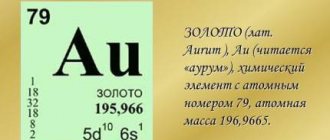747 8 min.
The volume of gold production in Siberia in 2021, according to the Ministry of Finance of the Russian Federation for 11 months of last year, decreased by 18% compared to the same period in 2019 in the district. Experts explain the change by the exit of two entities from the territorial district in 2021: the Trans-Baikal Territory and the Republic of Buryatia. However, according to market participants, the decline in production volumes was influenced by the pandemic and the restrictions imposed due to it. However, by 2026, experts expect a doubling of gold production in Siberia, which is associated with the commissioning of the new Sukhoi Log deposit in the Irkutsk region, which is the largest in the world.
Experts attribute the decline in production in Siberia to a reduction in gold content in processed ore
Photo: Vlad Nekrasov, Kommersant / buy photo
Experts attribute the decline in production in Siberia to a reduction in gold content in processed ore
Photo: Vlad Nekrasov, Kommersant / buy photo
Last year, from January to November, Russian regions produced 277 tons of gold, which is 2% more than a year earlier, reports the Russian Ministry of Finance. The positive dynamics are largely due to the growth in production by enterprises of the Far Eastern Federal District, which increased their figures by 13%, to 175 tons. These data take into account gold production in the Republic of Buryatia and the Trans-Baikal Territory. In 2018, by decision of the President of Russia, these two regions left the Siberian Federal District and joined the Far Eastern Federal District. At the same time, in the Siberian Federal District, gold production volumes decreased from January to November 2020 by 18%, 83 tons were mined.
“Gold production in the Siberian Federal District decreased in 2021 due to accounting features. In total, in January - November 2021, 17.1 tons were produced in the Trans-Baikal Territory and Buryatia, almost 16 tons were produced in January - November 2021,” commented Anton Prokudin, leading methodologist of the Expert RA rating agency. Without taking into account these two regions that left the Siberian Federal District, gold production in the district would have decreased by 0.6% in 2021, the speaker notes.
Today, the Siberian Federal District accounts for about a third of Russian gold production - only 31%. Previously, this share exceeded 40%, noted Finam Group analyst Alexey Kalachev. The Far Eastern Federal District occupies 64% of this structure.
Analysts also explain the decline in production due to the COVID-19 pandemic. In the spring of 2021, it became known about an outbreak of COVID-19 at the Olimpiadinsky mining and processing plant of JSC Polyus Krasnoyarsk, one of the largest gold deposits in Russia. The Olimpiadinsky GOK (owned by PJSC Polyus) in the Krasnoyarsk Territory produces more than 70% of the total volume of gold in Siberia (76% in 2019). In May, the media reported that the number of people sick at the Olimpiadinsky GOK was about 1.3 thousand people (the total number of employees at the mine is 3.4 thousand). An infectious diseases hospital was set up at the industrial site and more than 200 doctors were recruited. In addition, more than 200 military personnel and about 100 units of special equipment were sent to the area of contamination by the Ministry of Defense. The outbreak was eliminated in June. The general director of the gold mining company, Pavel Grachev, commented that the enterprise, despite the difficulties, did not suspend work and worked normally.
In June, the company's vice president for finance and strategy, Mikhail Stiskin, told Interfax that Polyus is experiencing a significant labor shortage in its mining operations (especially at Olimpiada, and to a lesser extent this applies to Blagodatny, another mine in the Krasnoyarsk business unit). The company has significantly slowed down the extraction of rock mass, which could affect production plans both this year and next, he did not rule out. In its annual report, the company indicated that stripping work at the Olympics decreased in 2021 due to disruptions due to COVID-19.
“The Polyus company was forced to take more stringent measures to combat the epidemic than its small competitors. This affected the production volumes of the entire district. Planned work was also carried out to replace equipment at the Olimpiada mine, which is the main resource base for Polyus. And this was also reflected in the overall statistics,” says Freedom Finance analyst Valery Emelyanov.
The volume of gold production at the Olympics at the end of 2021 amounted to 1.2 million ounces (34 tons), which is 14% less than the level of 2019, the company reported in January. At the same time, the volume of ore production here last year fell by 21% compared to 2019 and amounted to 16 million tons. In the Irkutsk region, the company also mines at the Verninskoye deposit, as well as at alluvial deposits. “These four assets, including Blagodatnoye in the Krasnoyarsk Territory, account for 75–80% of the company’s total gold production, that is, about 2.3–2.4 million ounces. At the Russian level, gold production is estimated at 11.3 million ounces (320 tons),” notes QBF investment analyst Ksenia Lapshina.
The total volume of gold production by all assets at the end of last year amounted to 2.7 thousand ounces (76.5 tons), which is 3% less than the previous year (80.5 tons). The volume of ore production by all enterprises last year compared to 2021 increased by 8%, to 71 million tons, which is due to an increase in this figure at Blagodatnoye, Natalka and Verninskoye, according to Polyus’ annual report. In 2021, Polyus forecasts production volumes of up to 2.7 million ounces.
Together, the Krasnoyarsk Territory and the Irkutsk Region produce more than 90% of the precious metal from the total volume in the district (76.6 tons of gold out of 83 tons in the district in January - November 2020). As for production in Tuva, Khakassia and the Kemerovo region, in total these regions account for about 6–7 tons.
In addition to Polyus, Valery Emelyanov calls the largest in Siberia PJSC Vysochaishy (GV Gold, includes the Golets Vysochaishy deposits in the Bodaibinsky district of the Irkutsk region) and Yuzhuralzoloto Group, includes deposits in the Republic of Khakassia - OJSC Kommunarovsky Mine, as well as Krasnoyarsk Territory - AS Priisk Drazhny LLC). “These enterprises in Siberia produce about 6 tons per year, their total share is about 10%. The rest of the market is divided among smaller cooperatives,” says the expert.
When will there be a shortage?
Experts give different estimates on the size of precious metal deposits that exist on the planet today. The fact is that only those deposits that are currently operating are considered; their reserves are estimated approximately. When predicting a particular outcome, experts often disagree. Some say that gold will last for 20 years, while others claim that for the third century, humanity will not know what a shortage of the yellow metal is.
Read also: Do-it-yourself school classroom corners
Our planet is rich in various elements and most of them are not found on the surface of the earth, but in its depths. Au was no exception; the 79th element of D.I. Mendeleev’s table is hidden from human eyes under tons of rock.
Geologists unanimously claim that deposits of the precious metal are located deep in the earth, they are in close proximity to the core of the planet. From an economic point of view, developing such deposits is unprofitable. But the situation may change radically.
All skeptics should cite the example of the Soviet Union, on whose territory they searched for and developed only alluvial deposits, and did not develop indigenous ones at all. The reason for this was the reluctance of the authorities to develop the industry and spend money on equipment and specialists.
Gold reserves of the world's countries
The gold reserves of countries are physical gold reserves managed by central banks or ministries of finance of states, which are part of the gold and foreign exchange reserves of world powers. They allow you to diversify financial savings, stabilize the exchange rate of the national currency, perform an anti-crisis role, and act as a means of payment. During the 20th century, world reserves increased more than 10 times - from 3175 tons in 1900 to 33524 tons in 2000. According to the World Gold Council, the gold reserves of the countries of the world by 2021 amounted to 34.8 thousand tons. The most dynamic increase in gold reserves for the period 2015–2020. observed in Russia (919.1 t), China (249.8 t), Kazakhstan (168.5 t), Poland (125.7 t), India (67.9 t). However, the gap in reserves between Russia and the leaders of the world ranking is still significant: the USA has 8133.5 tons, Germany has about 3367 tons, Italy has 2452 tons, and France has 2436 tons. The reserves of these countries have not changed for years. Then come Russia (2271 tons) and China (1948 tons), and Switzerland takes seventh place (1040 tons). own the largest reserves among individual countries - they account for 8133.5 tons of precious metal. The foundations of the country's modern gold reserve were laid in the midst of the Great Depression. In 1933, a Decree on the nationalization of gold was issued, according to which all individuals and legal entities were required to hand over all their gold to the state at a fixed price of $20.66/oz. After the end of the gold collection, its official price was raised to $35/oz. After World War II, American gold reserves reached their maximum in 1952 - 20,663 tons. During the years of the Bretton Woods system, the United States actively used gold to stabilize the dollar, which reduced its gold reserves by 2.5 times - to 8,133.5 tons. In addition to its own gold, the gold reserves of about 60 other countries are partially or completely stored in the United States. The volume of these reserves is not published in the press. Basically, this gold (estimated at 7 thousand tons) is located in the underground vault of the Federal Reserve Bank in New York. The United States avoids a real audit of these and its own reserves, which is the source of various theories. Recently, the volume of gold stored in the United States has been gradually decreasing - the owner countries are taking their gold. began creating its gold reserve only in 1951 in the wake of the “economic miracle”. In 1968, reserves reached their peak of 4,034 tons. Gold was purchased on the exchanges of New York, London and Paris, and remained stored there. In 2013, the German Central Bank launched a procedure for the removal of gold from foreign storage facilities. In addition, according to the DW news agency, as of 2021, 8,672 tons of gold were privately owned by German residents. Germany, like many other European countries, has signed the “Central Bank Gold Agreement” and undertakes not to sell significant volumes of this metal. had in 1935 the second largest reserve in the world - 3907 tons, but by the end of 1945 only 1378 tons remained, and by 1952 the reserves had fallen to 517 tons. In 1950–1960. France, like the whole of Europe, experienced an “economic miracle”; a new revival of French reserves began, which reached their historical maximum in 1966 - 4655 tons. But over time, the balance began to be upset. In particular, the dominant position of the US dollar in international transactions and the lack of a mechanism for adjusting the balance of payments led to disagreements. The European economy was overtaking the US economy, the dollar reserves of European countries were growing rapidly, while national currencies, including the franc, were destabilized. One of the few who in the 1960s. Jacques Ruef, an outstanding economist and adviser to Charles de Gaulle, spoke about the viciousness of manipulating the price of gold and maintaining a fixed dollar exchange rate. It was under his influence that General de Gaulle decided to exchange dollar reserves for gold. The share of France's gold reserves in its gold and foreign exchange reserves was increased from 73% in 1964 to 86% by the summer of 1966. In 1965 alone, France exchanged $874 million for gold. Unlike many other countries, France insisted during the exchange that the gold bullion would not be stored in the vaults of the Federal Bank of New York, but would be removed from the United States. The physical volume of gold in Russia's international reserves has been steadily growing in recent years: as of January 1, 2007, gold reserves amounted to 402 tons, and as of January 1, 2021, they exceeded 2,270 tons. After 2014, the Bank of Russia accelerated the increase in gold reserves for geopolitical reasons , in order to secure reserves in case of the introduction of further Western sanctions, including restrictions on payments in dollars. Gold makes up more than 20% of Russia's international reserves. Two-thirds of Russia's gold and foreign exchange reserves are stored in the Central Vault of the Bank of Russia in Moscow. Recently, the gold market has experienced an extremely tense situation. Due to restrictions related to coronavirus, supplies of physical metal began to be disrupted. Moreover, it is physical demand that is the dominant force at the moment. This has led to hitherto unseen price differences between paper contracts for the precious metal and physical bullion. Against this background, the Central Bank of Russia made an unexpected statement. The regulator reported that “from April 1, 2021, the Bank of Russia will suspend the purchase of gold on the domestic precious metals market. Further decisions on the purchase of gold will be made depending on the development of the situation in the financial market,” the Central Bank of the Russian Federation said in a statement. In recent years, it has been pursuing a policy of mass gold purchases. So, in 2013, he purchased 622 tons, becoming the largest consumer of gold in the world. Officially, China's gold reserves amount to 1948.3 tons, but some experts estimate China's gold reserves at more than 2700 tons. The officially reported own gold reserve (China considers Taiwan an integral part of its territory) is the 11th largest among all countries and amounts to 422. 4t, one of the largest gold miners (5th largest in the world), reached a peak gold reserve of 1023t in 1965, but in the 1980s the authorities began to sell off gold and invest in foreign currencies. Canada sold its last gold bar in December 2003, and high-quality coins in January 2014. By March 2021, there was no gold left in reserves.
Leading gold mining companies
Let's look at the leading companies in precious metal mining. Such enterprises do not operate in one country, but provide their services to several countries simultaneously. The company's shares are subject to trading on international exchanges. Therefore, individuals prefer to buy shares of gold mining companies rather than gold on the market. The list of the largest corporations includes the following.
The Canadian company Barrick Gold operates in the Russian Federation, Argentina, Peru, and the USA. The company owns 26 gold mines, which employ almost 29 thousand people. The Canadian company Gold Corp, which has branches in the States, Peru and Argentina, simultaneously with the extraction of precious metals, develops mines with platinum, copper, iron, and silver. Australian Newcrest Mining is represented in Indonesia, Australia and other countries. Newmont Mining operates in the United States, Uzbekistan, Peru, Canada, and Mexico. The Russian Polyus Gold is developing gold deposits in Khabarovsk and Irkutsk.











